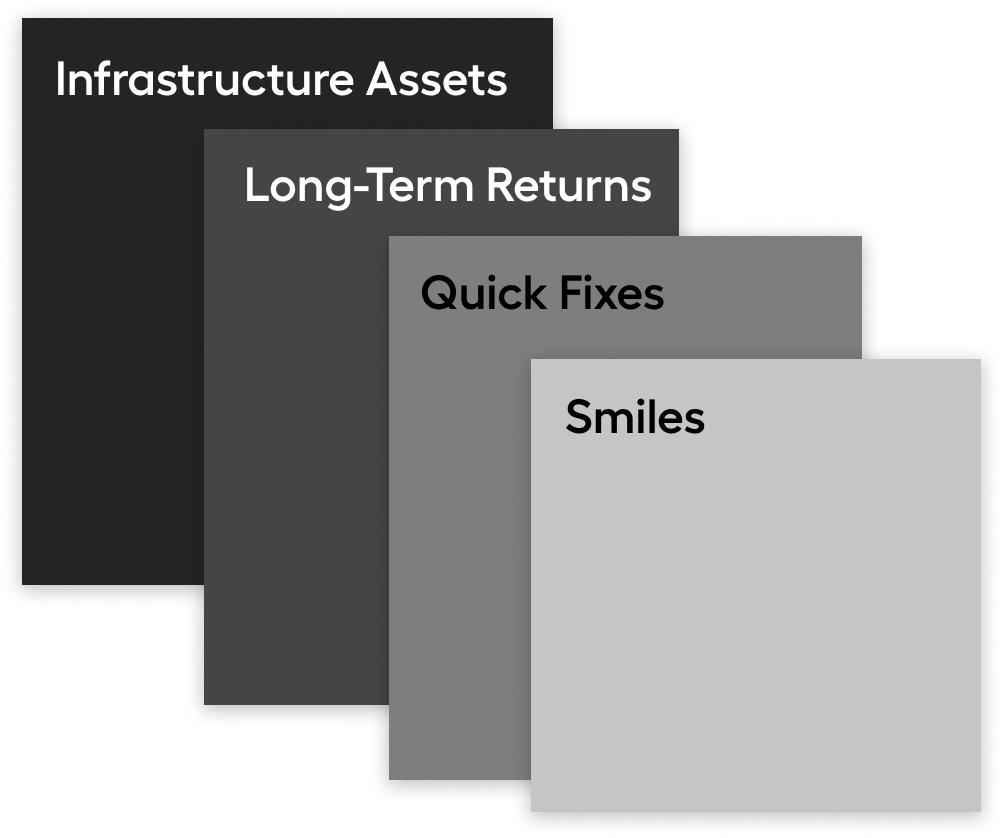Measuring ROI can be simple and straightforward: If you invest $10,000 in a digital advertising campaign and those ads drive five new customers to your business, with a total value of $25,000, that’s a $15,000 profit — or a 150% return on investment.
Calculating ROI in that situation is easy — you know exactly how much you spent on ads, and exactly how much profit those ads drove in new business.
But when it comes to calculating the ROI of Human Resources, things aren’t so cut and dry.
“It’s difficult to parse out the actual impact of an HR policy or project because in real life, there are so many variables that impact the behavior of our employees,” said Diane Gayeski, PhD, Professor of Strategic Communication at Ithaca College and Principal of consulting company Gayeski Analytics.
For example, let’s say you rolled out a new recruiting strategy and are trying to determine the ROI by looking at your employee retention rates. If your retention improved, it could be a result of your new recruiting practices — but it could also be because of your company culture, changes to your leadership team, or the economy at large.
Measuring the ROI of HR presents certain challenges, but while it may be a difficult undertaking, it’s not impossible. Here are three different ways to effectively measure the ROI of HR within your organization.
1. Take stock of where you are.
Before you can figure out the ROI of Human Resources — and, importantly, if your HR initiatives are taking your company where you want it to go — you need to get a clear picture of your starting point.
Doing an audit of your current HR practices, projects, and initiatives, and how each of these entities is impacting your team and organization as a whole, will help you “not only to identify gaps but to also benchmark current processes,” said Jana Tulloch, CPHR, founder of HR consultancy Tulloch Consulting.
For instance, say you’re gearing up to roll out a new onboarding program and want to measure the ROI. First, dig into your current onboarding process. Look at your budget and see how much you’re spending onboarding employees. Send out an employee survey to get feedback on what your team liked about the onboarding process — as well as what they thought you could do better.
Once you get that data, you’ll have a clear benchmark to use when evaluating your new onboarding process, and that will make it much easier to calculate the ROI. For example, after implementing your new onboarding process for six months, you may find that you spent $5,000 more on your new program, but employee satisfaction with the process has dramatically improved, which can have a significant impact on retention.
It’s hard to demonstrate the success or ROI of an HR initiative if you don’t have clear data on where you were starting from. Before you attempt to measure the ROI of your HR efforts, make sure you’re collecting as much data as possible on your starting point.
2. Use different categories of HR metrics
HR initiatives can have some wide-reaching implications. If you spend $10,000 rolling out an employee wellness initiative, because there are so many potential benefits — many of which will take time to play out, like increased engagement and productivity and lower absenteeism — you won’t immediately know your ROI in the same way as you would if you spent that $10,000 on a digital ad campaign.
That’s why it’s better to take a broader approach to calculating the ROI of HR. “I suggest that HR professionals look at a continuum of strategies to demonstrate business value,” Gayeski advised.

In both her work with clients and her experience in the HR field, Gayeski realized that the traditional way of measuring ROI wasn’t always applicable to HR projects (for example, employee training or communication initiatives). “There is quite a bit written about measuring ROI, but there are many limitations of just trying to look at the returns versus the expenses of a specific [HR] project,” said Gayeski.
“It’s difficult to isolate all the variables that might impact a given outcome,” Gayeski reiterated. Additionally, she noted, “even when it is more likely that you can isolate the effects of a given intervention or project, often the ROI is not an impressive number” — which can make it challenging to illustrate HR’s impact and value to leadership.
In response to these challenges, Gayeski developed her (e)valuation model, which, she said, is built around the idea that “HR projects, policies, and platforms can be assessed in different ways depending on the problem [they’re] trying to solve.” Unlike traditional ROI evaluation models, which just look at returns versus expenses, the (e)valuation model offers different ways to measure and evaluate HR initiatives.
“The point is that [traditional] ROI is not the technique that should be used in every situation to try to express the outcomes of an HR intervention,” said Gayeski. “The model looks at various types of assessment methods, based on the underlying problem or opportunity.”
Each step of her continuum model breaks down as follows:
- Smiles: Superficial methods for measuring employee satisfaction
- Quick Fixes: Methods that measure the outcomes of an individual project or initiative
- Long-Term Returns: Outcomes of coordinated strategies over time
- Infrastructure Assets: Measuring the contributions of HR to the bottom-line valuation of a business
Here’s an example of what this might look like in practice: Say you’re rolling out a new recruiting, hiring, and onboarding strategy, and you want to use this continuum to measure the ROI of the program. Measuring ‘smiles’ might include sending out employee surveys to get their insights on the onboarding experience, and how prepared they felt to step into their new roles. Measuring ‘quick fixes’ might be analyzing the percentage of candidates who accepted offers and moved forward with a position within your company. Looking at ‘long-term returns’ might involve measuring how your recruiting, hiring, and onboarding initiative impacted employee retention over the course of 12 months. Lastly, “measuring ‘infrastructure assets’ might involve digging into an asset like a new employee feedback system, calculating the estimated impact on profits or savings resulting from the suggestions collected over a period of time, and projecting that increased bottom-line as shareholder value,” Gayeski explained.
Measuring your HR initiatives at each of these different levels will give you a broader, deeper sense of the impact of the initiative on your organization, and can help you make a stronger case for the ROI of each initiative — even if that ROI doesn’t directly translate to a dollar amount and, instead, is more linked to an intangible (but invaluable) asset like employee engagement.
3. Set clear KPIs.
You can’t effectively measure the ROI of HR if you don’t know what exactly you’re measuring — which is why you need to set key performance indicators (better known as KPIs).
KPIs help you define what you’re trying to accomplish with your HR initiatives, and, just as importantly, how you’re going to measure success in reaching your goals.
For instance, if you’re rolling out a new learning and development (L&D) program with the objective of driving productivity, you need to know how you’re going to measure whether productivity is improving. Are you going to compare employee output with hours worked? Are you going to ask employees to fill out an anonymous survey to self-report how productive they feel each day? Are you going to track how quickly projects get done, and compare that to similar projects from before the L&D program?
KPIs give you the metrics you need to evaluate the success of an HR initiative, and from there, you can not only better calculate your return on investment, but continue to optimize the initiative to improve the ROI.
“[HR is] just like Sales, or R&D, or any other department in an organization,” Tulloch said. “What gets measured gets done. Plan, execute, measure, and refine.”
—
Measuring the ROI of Human Resources isn’t as easy, simple, or straightforward as some other areas of business, but it’s doable. By taking stock of where you are, setting clear objectives and KPIs, and adopting a broad, multifaceted approach to evaluating the impact of HR, you can get a better sense of how your investment into your team, your culture, and your organization is paying off — and what kind of ROI your HR department is driving.



.jpg)



